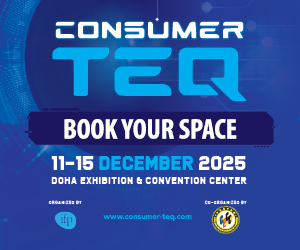The Dubai Future Foundation and the World Economic Forum have unveiled a list of ten emerging technologies poised to transform industries and societies in the years ahead.
Spanning fields from clean energy and advanced health treatments to artificial intelligence and next-generation nuclear power, the report highlights innovations with the potential for significant impact.
Mohammad Abdullah Al Gergawi, Vice Chairman of the Board of Trustees and Managing Director of the Dubai Future Foundation, emphasized that the accelerating pace of technological advancement is unlocking unprecedented opportunities for economic growth and societal benefit around the world.
His remarks were delivered during the launch of the Top 10 Emerging Technologies of 2025 report, published by the World Economic Forum in partnership with Dubai Future Foundation.
This landmark study is designed to help governments, businesses, and entrepreneurs anticipate and prepare for scientific and technological breakthroughs expected to gain scale in the near future.
Al Gergawi noted:
“Being ready to harness future technologies—and understanding their wide-ranging applications—has become an essential benchmark for governments and the private sector as they plan and build for tomorrow. We remain committed to fostering global partnerships and advancing research to anticipate emerging trends and technological opportunities.”
This is the first edition of the report to incorporate foresight analysis developed jointly with Dubai Future Foundation, and the first time a regional organization has formally contributed to this global WEF publication since its inception in 2011.
Over 300 experts from the Global Future Council network contributed insights, with DFF focusing on the long-term implications of each technology and their potential to address real-world challenges at scale.
Top 10 Emerging Technologies of 2025
Selected for their novelty, potential societal impact, and scalability, these technologies showcase strong themes around health, sustainability, artificial intelligence, and energy:
Green nitrogen fixation: Producing ammonia using renewable electricity through electrochemical processes
GLP-1 receptor agonists: Medications initially targeting obesity and diabetes, now explored for treating neurodegenerative diseases like Alzheimer’s and Parkinson’s
Osmotic power systems: Renewable energy derived from mixing freshwater and saltwater
Collaborative sensing: Networks of interconnected smart sensors across vehicles, infrastructure, and urban environments
Nanozymes: Synthetic enzymes that are more affordable, robust, and stable than their natural counterparts
Autonomous biochemical sensing: Devices that autonomously monitor health or environmental data
Advanced nuclear technologies: Safer, smaller-scale nuclear energy solutions like Small Modular Reactors (SMRs)
Generative watermarking: Invisible markers embedded in AI-generated content to verify authenticity
Engineered living therapeutics: Genetically modified microbes that deliver treatments within the body
Structural battery composites: Load-bearing materials in vehicles and aircraft that also store energy
The report outlines how these innovations could reshape global systems, from clean power generation and healthcare to digital content verification.
Al Gergawi concluded:
“The Top 10 Emerging Technologies report is designed to give governments, companies, and innovators a window into the scientific and technological breakthroughs most likely to scale in the coming years.”
Source: arabianbusiness.com
















































































